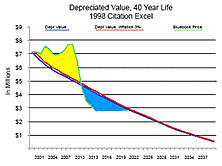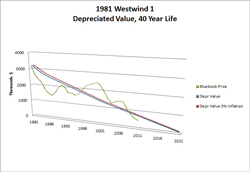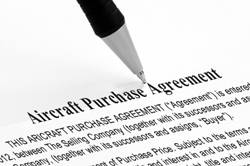Contributed by Bob McCammon, Aircraft Sales Rep and David Linscomb, Records and Research Team Leader

This Global Express is currently available for sale. For a complete listing, visit www.DuncanAviation.aero/
aircraftsales
Now that you’ve made the decision to sell your aircraft, don’t overlook a very important step – pre-purchase documentation. Well before the pre-purchase evaluation; make your first thorough inspection be of your aircraft’s logbooks. The more organized, complete and comprehensive, the easier the process and the more value they bring to the aircraft.
Organized, Complete and Up-to-Date
The airframe and engine log books should be complete, original and consecutive with all 8130s, 337s, etc. organized and accounted for. All Airworthy Directives and Mandatory Service Bulletins should be current; required maintenance, including life limited components, up to date.
The best way to verify all major components match what is recorded in the log books is to do a physical audit of your aircraft. Your aircraft should be on some type of maintenance tracking program, like Duncan Aviation’s Tracker. And if on Camp make sure all cards are well organized, and that the latest status report is current.
Logbook Audit
To take this a step further, you can have an audit of your aircraft’s records performed by an independent third party, preferably a factory authorized service center for the model of aircraft you operate. A detailed report showing any discrepancies in your maintenance documentation is typically provided. These discrepancies can be corrected early on in the process.
If present, a records audit can uncover indications of previous damage to the aircraft or any major alterations or repairs that may not be significant to the seller but could be a deterrent to the buyer. Time and time again, this kind of evidence is a showstopper during a business aircraft sales transaction. In numerous cases, a thorough review has shown an incident the current owner was not aware of; that happened before they purchased the aircraft but was no caught during the previous pre-purchase evaluation. By finding these incidents early, a through explanation can be made to a potential buyer.
If it is not convenient for you to get your business aircraft’s logbooks and records to a third-party facility, Duncan Aviation can send representatives to your facility to perform a thorough logbook audit on-site.
When your business aircraft enters a pre-purchase inspection, a complete records review is typically performed at the request of the buyer. By being pro-active, steps can be eliminated and unforeseen problems can be rectified before the pre-purchase inspection begins. Regrettably, a records review is usually not done until the aircraft arrives at the pre-purchase inspection facility where it is not uncommon for surprises to surface.
This records review early in the process will help insure a smooth transaction and streamline the selling process. Your broker can also provide a copy of the records research to potential prospects.
Duncan Aviation Aircraft Sales representatives have facilitated many buyers and sellers through the pre-purchase evaluation. They understand the impact a logbook can have when valuing a business aircraft in the secondary market. If you are considering putting your business aircraft up for sale and have questions about the current state of the logbooks, contact the Duncan Aviation Aircraft Sales & Acquisitions team.
Bob McCammon is an Aircraft Sales and Acquisitions Rep. at Duncan Aviation’s Lincoln, Nebraska facility, specializing in turbine and turbo-prop aircraft. He began working in aviation in 1968
David Linscomb is the Records & Research Team Leader located at Duncan Aviation's Lincoln, Nebraska, facility, specializing in Chapter 4 & Chapter 5 requirements on the latest information coming from the Original Equipment Manufacturers (OEMs) or the FAA. His aviation career began in 1984.







